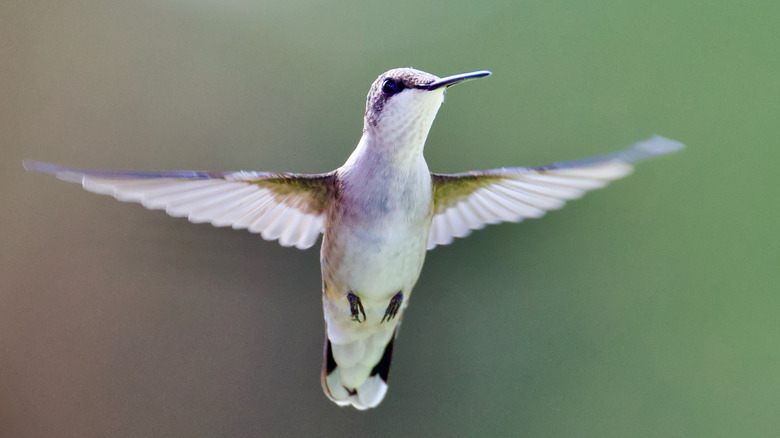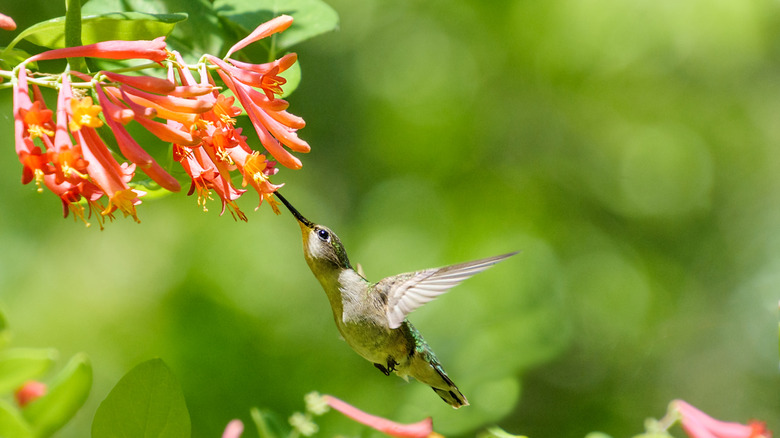The Flowering Vine You Should Prune In Winter To Attract More Hummingbirds
After the first frost blankets your region, you still have work to do in the garden before you rest for the season. Caring for dormant plants in the winter can actually give you a leg up for the following spring and summer. If you have a honeysuckle vine in your yard, consider pruning it during the colder months. This is an excellent way to promote flower growth and, in turn, encourage more hummingbirds to visit.
Anytime we talk about honeysuckle, it's important to make the distinction between invasive and non-invasive species. Many bush honeysuckle and the Japanese honeysuckle are considered invasive in the United States. However, varieties such as yellow honeysuckle (Lonicera flava), trumpet honeysuckle (Lonicera sempervirens), and goldflame honeysuckle (Lonicera × heckrottii) are not invasive. In fact, they can help you draw hummingbirds and a host of other pollinators to your yard. Many honeysuckles bloom from summer into fall, offering a lasting food source for local fauna. Honeysuckles are particularly compelling for hummingbirds since their tubular blooms are compatible with the hummingbird's long beaks. If you want to keep your feathered friends coming all season, it's important to prune your honeysuckle. This allows it to grow in the right direction and bloom more. Let's dive into the best way to prune this flowering vine.
How to prune your honeysuckle
Before you start chopping away at your vines, make sure your honeysuckle needs pruning in the first place. You should avoid pruning until the plant is a few years old. Once it's well-established, you can consider pruning if you notice a lot of overgrowth. You'll need to wait until your honeysuckle drops its leaves and enters its dormant state. Light pruning can stimulate growth and help your plant bloom more in the spring and summer. You can also choose to cut stems down to about 60 centimeters from the base in the winter.
You don't need anything too fancy — just a pair of gardening gloves and clean, sharp hand sheers. If you're not sure where to start, refer to the three D rule to properly prune your plants. Cut back any dead, diseased, or damaged branches. From there you can shape your honeysuckle if you find it necessary. However, keep in mind that carrying out a hard pruning can force the plant to focus more on new growth rather than blooms in the following spring or summer. If your goal is to transform your space into a hummingbird haven, consider a light maintenance trim. Don't remove more than one third of your vines for optimal blooming. Once you're done pruning, select the hardiest shoots to tie onto a trellis or other support. You can prune your honeysuckle every other year.

